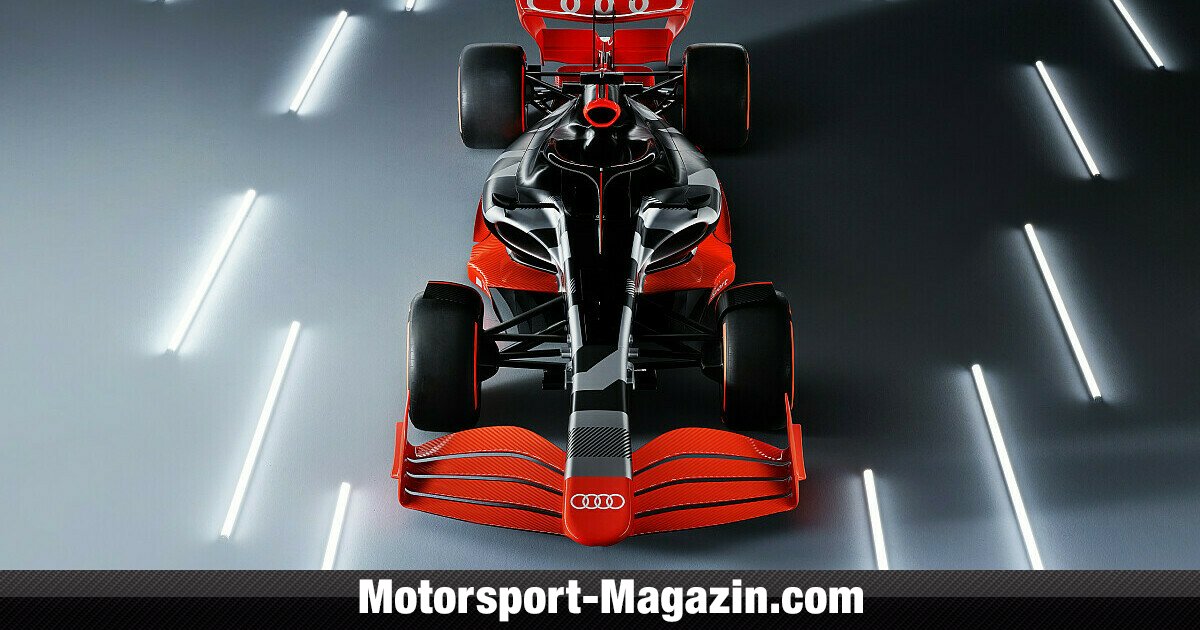Audi’s entry into Formula 1 is making inevitable progress. Less than two years before the first race of an Audi engine in the premier class of motorsport, the Ingolstadt-based company announced the next milestone on the weekend of the Austrian Grand Prix. The power unit developed in Neuburg an der Donau has already completed its first race distances on the test bench.
“We gained a lot of testing time with the individual components in 2023 and were able to incorporate the experience gained into the next construction stages. Significant milestones and goals have been achieved,” praised Adam Baker in an interview published by Audi. Baker is CEO of Audi Formula Racing GmbH, which is responsible for the development of the Formula 1 engine.
Audi power unit already virtually in Las Vegas, Spielberg and Singapore
CTO Stefan Dreyer agrees with Baker: “We have implemented a very ambitious modernization and expansion of our test facility. Today we have 22 state-of-the-art test benches at the site.” Dreyer, who is one of the few employees who has been involved in the Formula 1 project at Audi since day one, also announces further milestones in the near future. “After the successful race distances with the power unit, we will soon also be doing this with the entire drive, i.e. the combination of power unit and transmission,” says Dreyer.
The Formula 1 circuits in Las Vegas, Spielberg and Singapore were among the tracks used for the simulated race distances. According to Dreyer, the track in Las Vegas is particularly relevant for energy management. This will probably play a greater role in 2026 due to the significantly increased electric component of the engine. “Several fast and slow corners as well as a nearly two-kilometer-long full-throttle drive along the Las Vegas Strip offer a perfect development environment for coordinating the combustion engine and the ERS (energy recovery system) components,” explains Dreyer.

Audi intensifies cooperation with Sauber
Preparations for Audi’s entry into Formula 1 are still in full swing – and are unlikely to slow down until 2026. “The regulations allow a total of three test benches for single-cylinder tests, for example, and the FIA does not limit the operating times. We use this maximum number at the site as intensively as possible to develop the combustion processes of the internal combustion engines,” says Dreyer, giving an insight into the intensive efforts of Audi’s engine team. This now includes employees from 23 countries – according to Baker, including former employees from all other engine manufacturers.
But Audi is not only making steady progress on the engine side. The collaboration with the future Sauber factory team has also been intensified in the last six months. At the beginning of March 2024, Audi announced that, contrary to the original plans, it would take over 100 percent of the Formula 1 team from the previous majority shareholder, Islero Investments, owned by Finn Rausing.
“We made an early start in January 2023 together with the 2026 concept team in Hinwil. This work is now intensifying with the current chassis regulations,” reveals Baker. “Our goal is clear: to fully exploit the advantages and possibilities of a factory team when it comes to packaging and integrating the power unit.”
Gearbox production in Neuburg and Hinwil
Dreyer provides details on how exactly this will happen: “On the technical side, we are already working across locations in a real factory team mode. The focus is on integrating the power unit with important details such as thermal management. In addition, there is also close cooperation on the transmission.”
While the innards of the future Audi transmission are being developed in Neuburg, the structural parts such as the transmission housing and the rear axle are being produced in Hinwil. “The drive testing, consisting of the power unit and transmission, then runs on our powertrain test bench. This division is effective from a performance and competence perspective,” Dreyer is sure.
When Audi is on the Formula 1 grid for the first time in 2026, Audi would ideally like Carlos Sainz to wear the colors of the German car manufacturer as Nico Hülkenberg’s teammate. But the Spaniard’s decision about his future is still pending. You can read the latest developments on Sainz’s future here:
